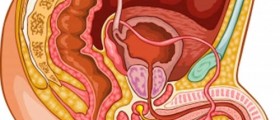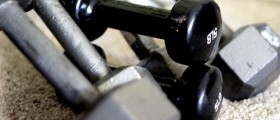
Kegel’s exercises for the women are developed by gynecologist, Dr Arnold Kegelin in the 1940s. The exercises are meant to strengthen the pelvic floor and PC (pubococcygeus) muscles and to help the patient regain urinary control.
The PC muscle is located between the anus and the genitals and is easily located when stopping the urine flow as you urinate. Learn to contract this muscle with your will, and coordinate it with deep breath - every inhalation should be followed by PC contraction. You should start with 10-15 contractions a day and then work up to 25 or even more. These simple exercises won’t interfere with your everyday life, you could do them any time, any place. There is a chance to do Kegel’s workout in a wrong way, pushing down and taking a deep breath, instead tightening the muscles. This kind of exercise is actually counterproductive, and it won’t improve your sex life.
As the side effect of the exercise patients reported increasing sexual satisfaction, and for some that was the first time they experienced an orgasm. The Kegel exercises are now taught all over the world, in childbirth classes, mentioned in women’s magazines, but rarely taught by health professionals in the United States.
It has been confirmed, in research and practice, that there is a direct link between PC strength and sexual enjoyment and ability to reach an orgasm. Strengthening the PC muscles also increases ease and intensity of an orgasm. When performed in men, these exercise result in better control and more pleasurable orgasm, and it may even be the reason for multiple male orgasm. Kegel’s exercises are proven to help reducing the enlarged prostate in men, because of its massaging effect to the prostate gland.
A strong PC muscle is important for optimal sexual function, helps preventing urinary stress incontinence, controlling the ejaculation and erection. It also intensifies the orgasm, in both, men and women and makes multiple orgasms possible.
In women after pregnancy and birth, Kegel’s exercises are effective in improving urinary stress incontinence. The workout affects the mechanical aspect of sexual function and it doesn’t improve emotional or physical causes that results in lacking libido or inability to reach orgasm.
Pregnant women who practiced the exercises are less likely to suffer from urinary incontinence in pregnancy or to develop urinary incontinence after birth. After having a baby, the exercise could help in improving mild to moderate leaking of urine, or even cure the situation. If the leaking after the child birth is more than mild, or there is nerve damage, you should consult an urogynecologist.

















Your thoughts on this
Loading...